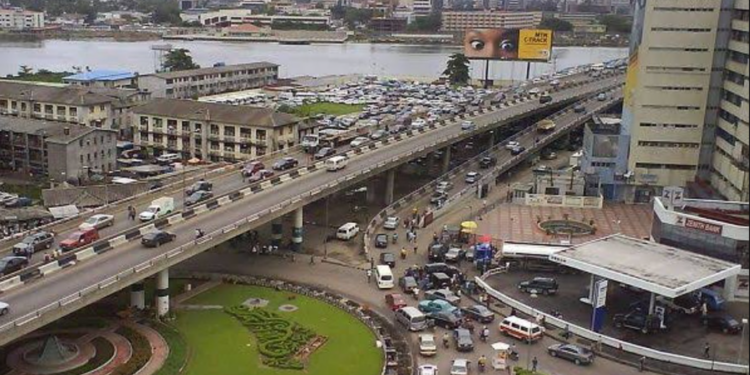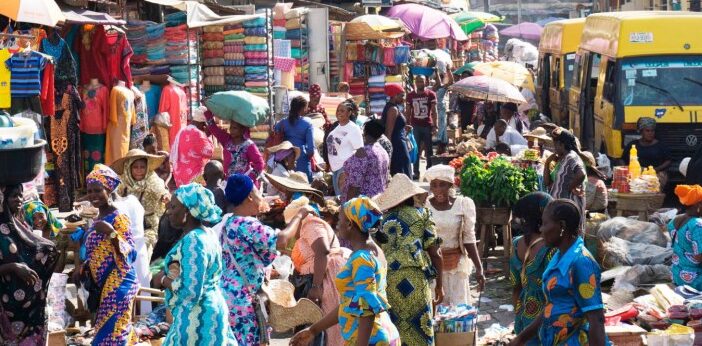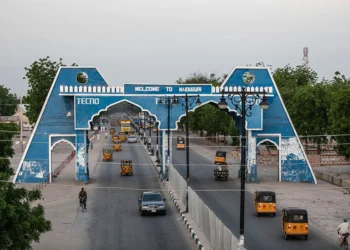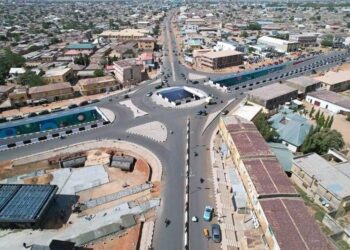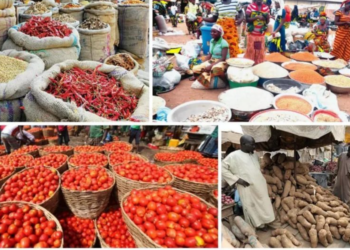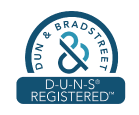Nigeria’s headline inflation rate in September 2024 rose to 32.70%, up from 32.15% in August 2024.
This is according to the National Bureau of Statistics (NBS) Consumer Price Index (CPI) report, which stated that inflation during the month was propelled by increases in transportation costs and food prices.
On a year-on-year basis, the rate was 5.98%-points higher than the 26.72% recorded in September 2023, indicating a significant increase in inflation over the past year.
Also, on a month-on-month basis, the headline inflation rate in September 2024 was 2.52%, 0.30% higher than the 2.22% recorded in August 2024. This indicates that the average price level increased at a faster rate in September compared to August 2024.
The food inflation rate in September 2024 was 37.77% year-on-year, marking an increase of 7.13 percentage points from the 30.64% recorded in September 2023.
On a month-on-month basis, the food inflation rate in September 2024 stood at 2.64%, reflecting a 0.27% rise compared to the 2.37% recorded in August 2024.
This increase can be linked to the rising prices of items such as beer (local and foreign) in the tobacco class, vegetable oil, groundnut oil, palm oil in the oil and fats class, as well as beef, gizzard, dried beef in the meat class, and products like Lipton, Milo, and Bournvita.
The average annual food inflation rate for the twelve months ending in September 2024 was 37.53%, a 11.88%-point increase from the 25.65% recorded in September 2023.
Across Nigeria, some states experienced increases and others saw decreases in both all-item and food inflation.
Below is a list of states with the highest inflation rate in Nigeria in September 2024, according to data from the NBS:
10. Zamfara
Zamfara experienced a modest increase in both all-item and food inflation rates. The all-item inflation rate increased from 33.42% in August to 34.9% in September, showing a 1.48% rise. Food inflation also increased from 37.77% to 39.4%, reflecting a 1.63% rise. These increases suggest that both food and non-food prices are contributing to the inflationary trend in the state.
9. Abia
In Abia, the all-item inflation rate increased from 34.41% to 35.0%, showing a 0.59% rise. Similarly, food inflation rose from 40.06% to 40.9%, marking a 0.84% increase. The parallel increases in both categories suggest that rising food prices are a key contributor to the overall inflation in Abia, making it more expensive to live in the state.
8. Niger
Niger has seen a slight reduction in inflation. The all-item inflation rate decreased from 35.41% in August to 35.2% in September, marking a 0.21% drop. Meanwhile, food inflation decreased from 40.51% to 39.8%, a decline of 0.71%. Though the reduction offers some relief, the relatively high food inflation still indicates that the cost of living is being driven heavily by food prices.
7. Anambra
Anambra’s all-item inflation rate saw a significant increase, rising from 33.9% in August to 36.1% in September, indicating a 2.2% increase. However, food inflation slightly decreased, falling from 40.09% to 39.8%, a 0.29% reduction. This suggests that while the overall cost of living is increasing, food prices are stabilizing, possibly easing some inflationary pressure in the state.
6. Yobe
Yobe’s all-item inflation rate increased from 35.43% in August to 36.2% in September, representing a 0.77% rise. Meanwhile, food inflation rose slightly from 43.22% to 43.5%, marking a 0.28% increase. The higher food inflation suggests that rising food costs remain a significant driver of the overall inflationary trend in Yobe.
5. Gombe
Gombe experienced an increase in both its all-item and food inflation rates. The all-item inflation rate rose from 35.23% to 36.4%, reflecting a 1.17% increase. Food inflation increased from 43.24% to 44.1%, marking a 0.86% rise. The rise in both categories highlights inflationary pressures, with food prices contributing to a higher cost of living in the state.
4. Kebbi
Kebbi saw its all-item inflation rate increase slightly from 37.5% in August to 38.0% in September, a 0.5% increase. Food inflation also increased, rising from 40.81% to 41.2%, a 0.39% increase. This suggests that while food prices remain a primary driver, non-food inflation is also contributing to the rising cost of living in Kebbi.
3. Jigawa
Jigawa’s all-item inflation rate rose from 37.44% in August to 38.4% in September, marking a 0.96% increase. Food inflation also increased, rising from 42.75% to 43.2%, reflecting a 0.45% rise. The higher food inflation compared to all-item inflation suggests that food prices continue to be a significant factor in the overall inflation in Jigawa.
2. Sokoto
Sokoto experienced one of the largest increases in both all-item and food inflation rates. The all-item inflation rate jumped from 35.89% to 38.7%, reflecting a 2.81% rise. Food inflation increased sharply from 46.98% to 50.5%, marking a 3.52% increase. These significant increases highlight that Sokoto faces substantial inflationary pressure, with food prices playing a dominant role.
1. Bauchi
Unlike other states, Bauchi’s food inflation rate is lower than its all-item inflation rate. However, it still maintained its lead as the most expensive state to live in Nigeria for the fifth time. While the all-item inflation rate dropped from 46.46% in August to 44.8% in September, reflecting a 1.66% decrease, food inflation rose from 33.9% to 36.1%, showing a 2.2% increase. The contrast between falling all-item inflation and rising food inflation suggests that although non-food costs may be decreasing, food prices continue to push up the cost of living.

